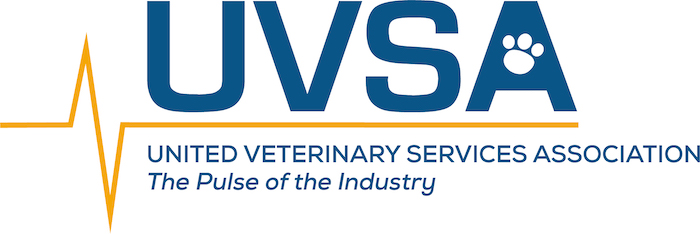|
Survey #3 - Pet Food at Center Stage of Industry Insights Survey
The August 2019 UVSA Industry Insights Survey, with highlights presented at the KC (Kansas City) Animal Health Corridor 2019 Market Insight Seminar, focuses on pet owner attitudes about and patterns for pet food and nutrition, including the veterinarian’s role in these fundamental pet care choices.
- 58% of dog owners have discussed the dog foods they use with their veterinarian, and 48% have done so in the last year, compared with only 48% and 32%, respectively, among cat owners.
- Only a third (33%) of dog or cat owners have discussed with their veterinarian the pet treats they use, a figure that rises only to 50% even among those who buy dog or cat foods from their vet.
- 61% of purchasers have changed dog food brands within the previous 12 months. The top motivations for changing products were switching to a higher-quality brand (29%) and discussion with veterinarian (23%). Addressing a specific pet health concern (14%) was also one of the more common motivation.
- In terms of the characteristics that dog and cat owners associate with healthier pet food, 41% strongly agree that less processed pet foods are healthier, and 34% strongly agree that those made from whole foods are healthier, compared with 27% who strongly agree that they seek out pet foods based on information provided by their veterinarians.
- The Association for Pet Obesity Prevention (APOP) reports that 56% of pet dogs and 60% of pet cats are overweight or obese. However, this UVSA survey found that only 24% of dog owners acknowledge having a dog that’s somewhat or very overweight. Among the fewer than half of dog owners who recognize having overweight dogs, 74% had discussed this issue with their veterinarian.
- 10% of dog owners report buying dog food at their vets. Among these customers, 49% reported buying prescription pet foods, 36% buying non-prescription brands only sold through veterinarians, and 38% reported buying brands also available for purchase in stores or online.
- Among customer who buy pet foods through their vets, only half (52%) strongly agree that they understand the differences between prescription and non-prescription pet foods, and only a fourth (26%) strongly agree that the price of pet foods bought through their vet is reasonable.
- In decisions related to providing guidance on and purchasing options for pet foods, veterinarians may be overlooking an important source of revenue, client loyalty, and customer interaction.
- Three-fourths of dog or cat owners somewhat or strongly agree that they are willing to pay more for pet foods that are healthier. Among dog owners who buy pet food through their vet, nearly half (45%) spend $50 or more monthly on dog food (compared with a third of dog owners overall), and similarly 45% pick up pet food at their veterinarian at least once a month.
The veterinary industry must address not only its competitiveness in the pet medications market in the age of e-commerce, but also the potential role of pet food in making veterinarians the top-of-mind, front-of-wallet pet healthcare resource.
|
